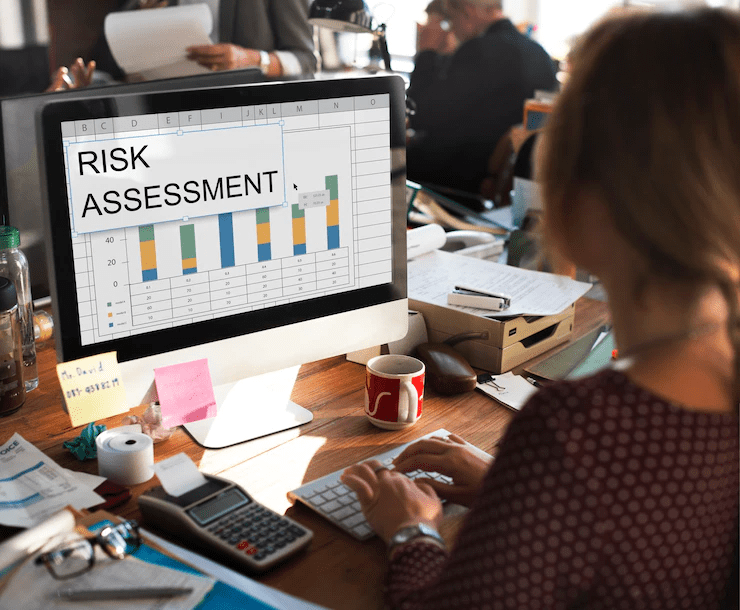Adhering to internal and external regulations and procedures to avoid the risks associated with non-compliance is a crucial aspect of any organization’s performance. Compliance risk management is the process of identifying, evaluating, and mitigating any losses that may result from a company’s non-compliance with laws, regulations, and internal and external policies and procedures.
The regulatory environment is ever-changing, and risk, by definition, involves uncertainty. It is, therefore, essential to regularly examine and update compliance activities. To accomplish this, the business and personnel responsible for compliance must employ the necessary technology, artificial intelligence, and tools to achieve all compliance objectives, gather the required performance indicators, and provide timely reports on management performance.
Understanding and implementing compliance risk management can be challenging, considering the need to design a plan that directs the activities and ensures proper measures are taken. Continue reading to learn the key steps to implementing a successful compliance risk management program.
Step 1: Understand the potential risks of non-compliance.
Understanding what your compliance risks are and how they arise is the first step in strategic risk management. Some risks are more widespread than others—and those are the compliance concerns your program should target most aggressively and immediately.
In the gravest circumstances, violating compliance duties can result in monetary penalties, exorbitant investigation fees, and imprisonment for executives implicated in misconduct. Depending on your industry, you might face different consequences, including penalties and fines, reputational damage, and restricted access to the supply chain.
Step 2: Set your organization’s risk tolerance.
Determine your company’s risk tolerance for compliance violations. The higher its risk tolerance, the less stringent your compliance policies and procedures ought to be.
Simply put, risk tolerance refers to an acceptable variation from a performance goal. This is the benchmark you should keep in mind when designing policies, procedures, and internal controls. Consider how far operational transactions or employee behaviors can deviate from the performance goal before senior management needs to intervene.
Risk management is primarily about achieving an organization’s objectives while remaining within the boundaries of acceptable deviation from the stated goal. Therefore, you should develop a risk management system that monitors critical risk indicators and instantly alerts employees if they deviate from acceptable performance boundaries.
Step 3: Put a regulatory framework in place.
Regardless of the business sector, it is necessary to establish a regulatory framework that requires collaboration across all departments and organizational levels. Construct a framework that guarantees your organization recognizes and understands its responsibilities, obligations, and liabilities toward the government, employees, investors, and third-party vendors. This involves implementing a method of checking for new or updated compliance requirements that your organization may need to meet.
Leverage software packages for regulatory compliance management that enable you to determine and organize the laws, rules, and internal policies you must comply with—in one location.
Step 4: Develop policies and procedures to ensure compliance.
To ensure compliance across the organization, it is critical that you safeguard your compliance efforts by developing policies and procedures that confirm you are meeting your obligations on time. Assigning ownership and responsibility to specific employees or teams is a vital component of this phase to stay on top of required standards.
Develop policies and programs that explain legal requirements to employees so that they understand their responsibilities and know how to adjust their behavior to fulfill them. Encourage managers and employees to report suspected fraud and other misconduct without fear of repercussions.
Step 5: Conduct regular risk assessments.
The risk assessment process is a core component of compliance risk management. This process entails identifying and analyzing the potential threats to an organization’s capacity to ensure compliance with laws and regulations. Risk assessments may involve examining information sources, such as reports from the company’s management and regulatory bodies and information the organization already possesses.
An organization can determine its level of compliance after performing a compliance risk assessment, revealing what changes it must make for improvement. The organization can use the information gathered to develop and implement a compliance risk management strategy that ensures legal compliance. For instance, the assessment may suggest that the company needs more secure remote work methods. The company can then plan to address this issue by implementing more comprehensive remote work policies.
Step 6: Review and report the effectiveness of compliance risk management efforts.
Compliance risk management is an ongoing process that entails tracking changes in the regulatory environment to guarantee an organization’s compliance is current. Revisit compliance policies, procedures, and training materials in light of new policies, regulations, and directives.
Periodically evaluate the effectiveness of your company’s compliance program. Report to executive management, stakeholders, and other interested parties any instances of non-compliance and the corrective measures taken to remedy them. Moreover, maintain a record of your compliance history for internal or external audits.
Conclusion
Compliance risk management is not a one-time endeavor but an ongoing, dynamic, and continuous operation. The goal is not to eliminate all compliance concerns permanently—that is impossible. Instead, your organization must make the most of available resources. Developing a standardized system following the outlined steps above will enable your organization to consistently meet its compliance obligations and explore voluntary standards that may enhance business processes.

